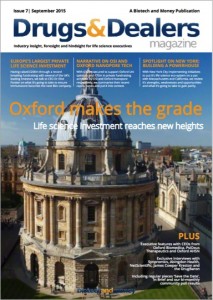Five things I learned from Misti Ushio, Managing Director of Harris & Harris Group
Quality sites
- Online Casinos UK
- Casino Non Aams
- Casinos Not On Gamstop
- UK Casinos Not On Gamstop
- Best UK Casinos Not On Gamstop
- Casino Sites Not On Gamstop
- Casino Sites Not On Gamstop
- Casino Sites Not On Gamstop
- Non Gamstop Casino Sites UK
- Non Gamstop Casinos
- Best Online Casino Canada
- Casino Sites Not On Gamstop
- Non Gamstop Casino UK
- UK Online Casinos Not On Gamstop
- Best Slot Sites 2025
- Casinos Not On Gamstop
- Meilleur Casino En Ligne
- Non Gamstop Casinos
- Slots Not On Gamstop
- Non Gamstop Casino
- New Online Casinos Not Registered With Gamstop
- Casino Non Aams Sicuri
- Casino Sites UK Not On Gamstop
- Casino Non Aams Italia
- Bitcoin Casino
- Meilleur Site Casino En Ligne Belgique
- Migliori Siti Scommesse Non Aams
Having previously worked as a researcher for Merck and at Columbia University’s tech transfer office, Misti Ushio is no stranger to cutting edge biotech innovation. Through her years of experience, she has not only attained a PhD in synthetic biology and had fantastic insight into the most exciting new biotechnologies, but also taken on the role of CEO for TARA Biosystems, one of Harris & Harris’ portfolio companies.
During a recent interview with Biotech and Money, Misti takes us through some of the latest changes in thinking surrounding the life science economy – both in New York and further afield. On top of this, Misti gives her opinions on the most exciting new fields of the life sciences to keep an eye on in the coming years.
Interdisciplinary is good
Harris & Harris stand out from other large Venture Capital firms for their interdisciplinary approach to seeking new innovation, blurring the boundaries between biology and other major disciplines. Whether it’s working with TARA biosystems – who use electronics to stimulate heart cells ex-vivo to make them behave more like a human heart – or simply searching for the next wave of talent, Misti’s line of work stands at the borderline between biology and numerous other technologies.
“There’s been a lot of work at these interfaces: it’s not a new concept. But real life applications are now starting to come out of all this. Our group has a history of investing in many of these disciplines in their own verticals, so we took a step back and said look ‘we should work more closely together’. We’re taking this team approach to the next level. For example, my colleague, who is a physicist, my other colleague, who is a chemist, and myself – a biochemical engineer – we’re combining our expertise together and seeing where those interfaces are.”
“There’s been a lot of work at these interfaces: it’s not a new concept. But real life applications are now starting to come out of all this. Our group has a history of investing in many of these disciplines in their own verticals, so we took a step back and said look ‘we should work more closely together’. We’re taking this team approach to the next level. For example, my colleague, who is a physicist, my other colleague, who is a chemist, and myself – a biochemical engineer – we’re combining our expertise together and seeing where those interfaces are.”
New York’s life science scene is based on four main elements
Misti muses over the differences between New York and other well established biotech hubs such as San Francisco or Boston. The main difference is simply one of time frame: the key ingredients for a thriving biotech community have been put in place, but not yet had time to bloom. She likens islands of entrepreneurism to droplets of mercury that will eventually pool together once the pieces have fallen into place.
“I think there are four elements that every ecosystem needs. And I think that for New York, they’re finally here now. The city’s certainly not on par with Boston or The Bay on a timing stand point, but I think it has the potential to be.
Firstly, you’ve got to have top science, and that’s clearly here in New York. It’s always been here.
Secondly, you’ve got to have the right people. It’s a big question mark in people’s mind: where’s the talent going to come from? Is it here? My gut feeling is that it is here already; we just need to find it.
Next, you’ve got to have the infrastructure. These aren’t virtual companies. You need a lab. You need real space, because you’re making stuff! It’s been a problem, but over the last two years or so that’s been getting a lot better, with the setup of Harlem Biospace, BioBAT and the Alexandria Centre for Life.
Finally, there’s the issue of capital. Who is willing to take the risk in building and investing in these companies? There’s a lot of money in New York city, but it tends to not be early stage money. Harris and Harris do invest at early stage; we invest all over the place, and we’ve been making a concerted effort to make investments in New York.”
Large VCs are putting in a conscious effort to back early stage venture
Since the 2008 financial crisis, there has been a definite move away from early stage investment by classic venture capital firms, due to the obvious risks imposed on their stakeholders. Misti, however, assures us that many of the larger VCs, including Harris & Harris, are making a conscious effort to fund early stage ventures, for fear of their pipelines drying up.
“I think it’s shifting. Since 2010 there’s been a huge attrition in available venture capital, but in the past year or so have we seen a resurgence and interest in early stage.
Some of the top funds – so Arch, Flagship, Third Rock and Versant – have large funds and are committed to doing early stage. So whilst many smaller firms aren’t focussing on early stage, you still have a couple of big ones that have survived and been able to keep going. And that’s good, they’re coming out strong.”
Misti also praises corporate venture capital for stepping in to fill the gap when they were needed:
“I think Corporate venture has been super strong. They really stepped in when a lot of the venture capital firms went away or struggled to raise money: they’ve been very supportive. It’s mostly because they realise that if they don’t move earlier in the investment cycle, then they’re not going to have any pipeline projects or products to buy! Most pharma and biotechs now have a venture arm and invest quite early. It’s changed the whole dynamic.”
“I think Corporate venture has been super strong. They really stepped in when a lot of the venture capital firms went away or struggled to raise money: they’ve been very supportive. It’s mostly because they realise that if they don’t move earlier in the investment cycle, then they’re not going to have any pipeline projects or products to buy! Most pharma and biotechs now have a venture arm and invest quite early. It’s changed the whole dynamic.”
Antibiotics are in fashion again
Recent years have seen a move by big pharma away from antibiotics, due to a lack of profitability and the difficulty of discovering new antimicrobial molecules. This is completely counter-productive, considering how large a problem the issue of microbial resistance is becoming. Misti, however, is more optimistic for the future of antibiotics:
“Because of of sequencing, we now have the ability to learn more about the microbial populations within the land and within our bodies, and now the whole field of microbiology is wide open again because of sequencing technology.
Most pharma went out of antibiotics and microbiology, but now you see it coming back, and it’s because they’re totally necessary. We still need antibiotics, and we need better ones. There are a lot of small companies in the states right now looking at how you deal with outbreaks in hospitals, where you have strains that are resistant. After all, you don’t want to go to hospital to get infected!”
Stem cell technology is exciting
TARA Biosystems uses stem cell technology, in collaboration with electronics, to provide game-changing new ways to study heart disease. Working with such an innovative young company, Misti has had plenty of time to appreciate what an exciting field of biotechnology this is:
“Stem cells in general are very exciting right now. In the past people have used all kinds of different cells, non-human or what have you, to study whether new medicines are safe, if they’re effective, and to discover new mechanisms of action to attempt to cure disease. The problem is that most of these systems aren’t predictable. You see things fail all the time: you might get to phase 2 or phase 3, but then you realise it has unforeseen side effects or doesn’t work and it gets pulled.
The question is, how do you avoid that? How do you get to a point where most of what you’re putting through is going to work? With advances in stem cell science and tissue engineering, you’re getting more and more predictable human building tissues.”
“Stem cells in general are very exciting right now. In the past people have used all kinds of different cells, non-human or what have you, to study whether new medicines are safe, if they’re effective, and to discover new mechanisms of action to attempt to cure disease.”
READ THE FULL INTERVIEW HERE.
Misti will be speaking at the upcoming Biotech and Money New York conference, taking place on 17th November at the TKP New York Conference Center.
She will join the 11.05am panel ‘Spurring early stage venture funding and financing’ that features industry experts, including Frank Rimalovski, Executive Director, NYU Entrepreneurial Institute and Managing Director, NYU Innovation Venture Fund, Shari Coulter Ford, Senior Vice President, Partnership Fund for New York City, Tim Shannon, General Partner, Canaan Partners and Nada Jain, Managing Partner, Golden Seeds Fund2 LP and Managing Director, Golden Seeds.
Download the event brochure for more information.





Leave a comment